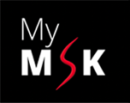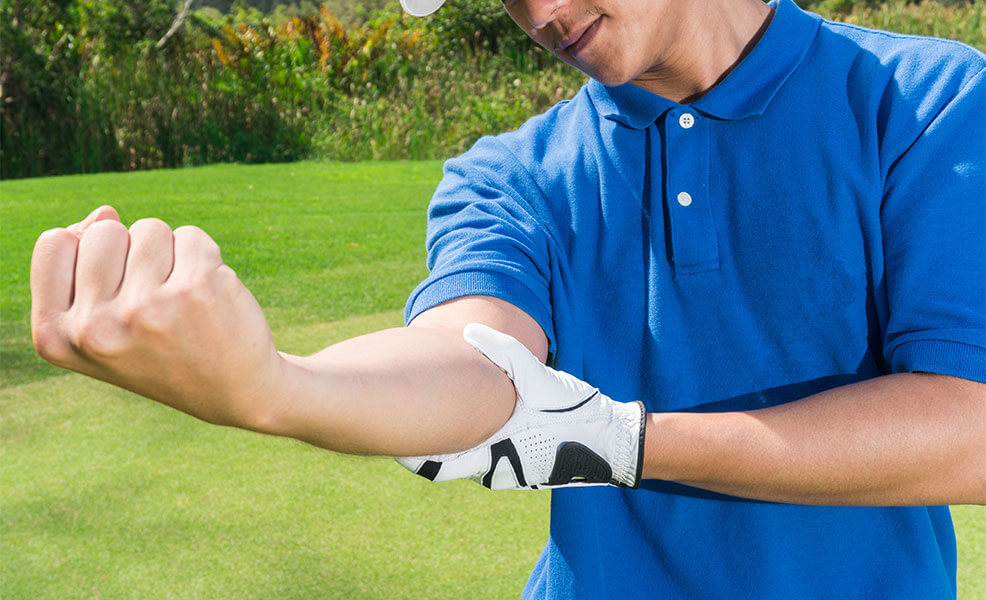
Golfer’s elbow, also known as Medial Epicondylitis, is a painful condition from an injury or inflammation in the tendons connecting your forearm muscles to the inner side of the elbow. This condition causes pain on the inside of the elbow and which often spreads to the palm side of the forearm.
It is also known as tendonitis or tendon degeneration of the tendons attaching to the inside of the elbow.
Hence the term medial epicondylitis is used which means inflammation of the tendons attaching these muscles to this part of the elbow joint. The muscles involves are; Pronator Teres, Flexor Carpi Radialis, Palmaris Longus, Flexor Carpi Ulnaris and. Flexor Digitorium Superficialis.
Together this muscle group also helps in flexing the forearm and wrist. Therefore, the pain of Golfer’s elbow can occur during activities which involve wrist flexion
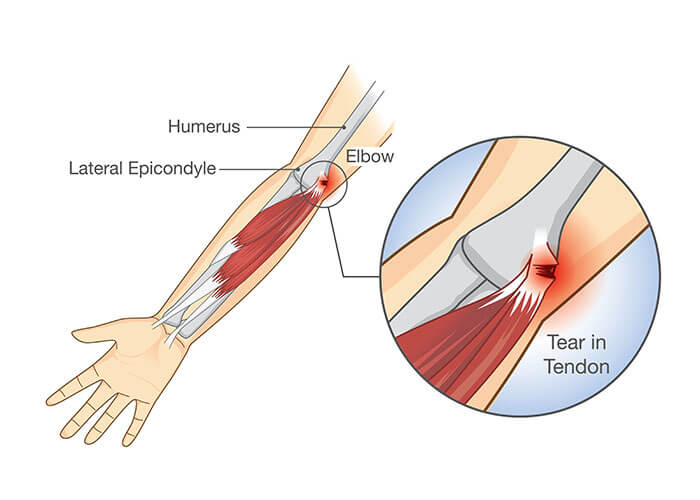
Golfers elbow is also referred to as pitcher’s elbow, climber’s elbow or little league elbow. This is because it is common injury among baseball pitchers.
Golfer’s elbow is similar to another condition that causes elbow pain; known as tennis elbow. The main difference between the two conditions is that golfer’s elbow occurs on the inside of the elbow, whereas tennis elbow (also known as lateral epicondylitis) occurs on the outside of the elbow.
Overview
Golfer’s elbow usually occurs between the ages of 40 to 60 and is less common than tennis elbow. You are more likely to get a golfer’s elbow when you overuse your wrist and arms for movements like grasping, twisting, bending, lifting or throwing.
Over time, these repetitive movements put a strain on the medial common flexor tendons of the elbow, causing inflammation or microtears and degeneration in these tendons.
Though golfer’s elbow can affect anyone, as mentioned earlier in the article, it usually affects pitchers and overhead-throwing athletes. Golf, archery, weightlifting, bowling, javelin throw, tennis, and other racket sports are some of the major sports that can cause golfer’s elbow.
90% of people who get affected by this condition do not hail from an athletic background. They are people who have professions that involve repetitive hand movements like carpentry, plumbing and keyboard typing.
Symptoms of Golfer’s Elbow
The pain from golfer’s elbow usually occurs on the palm side of the forearm and radiates from the elbow to the wrist. In Golfers elbow, the patient will often feel pain on the same side as the little finger.
The severity of the pain can range from mild discomfort to excruciating pain throughout your forearm. If you have golfer’s elbow, you will also feel:
- Sudden or gradual elbow pain
- Stiffness in the elbow
- Tenderness on the inner side of the elbow
- Shooting pain on the inner side of the elbow while moving
- Weakness in hands and wrist
- Reduced range of motion
- Reduced gripping
- Tingling or numbness in the hand
- Pain when you bend or flex your wrist
Causes of Golfer’s Elbow
Golfer’s elbow occurs due to overuse or injury within the muscles in the forearm. Activities involving gripping, twisting, flexing cause tears and degeneration in the flexor tendons, causing golfer’s elbow.
The other causes are:
- Racket sports
- Throwing sports
- Wight training
- Prolonged usage of handheld tools like hammers and screwdriver
- Repetitive hand movements in activities such as painting, raking
- Direct trauma or fracture from a fall, accident or sports injury
Occupations at Risk of Golfers Elbow:
- Plumbers
- Painters
- Butchers
- Construction workers
- Cooks
- Computer Users
- Assembly line workers
Diagnosis of Golfer’s Elbow
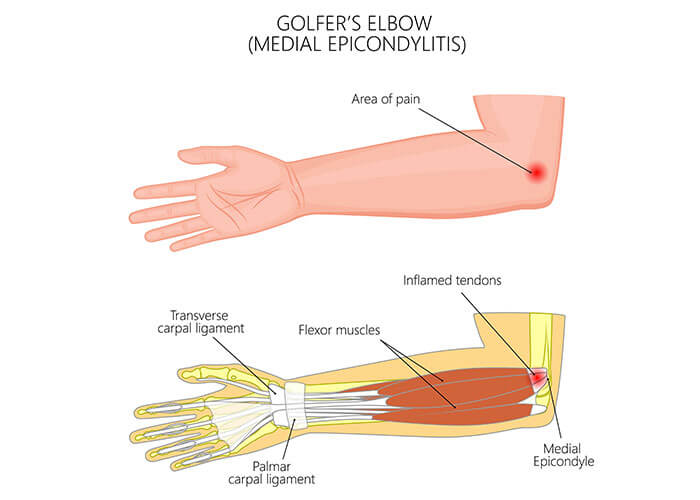
After reviewing your medical history, the clinician will do a physical examination. Your affected arm will be put through a range of movements including bending your wrist or raising your hand against resistance. Frequently an ultrasound scan may also be performed to look for tendon injury or tendon degeneration.
Occasionally when the diagnosis of Golfer’s elbow is in doubt, you may have other imaging tests like radiography, MRI to rule out other causes of your pain.
Treatment for Golfer’s Elbow
After diagnosis, your doctor will first try to treat your symptoms with non-invasive procedures. You will be asked to rest and ice your elbow to relieve the pain. If resting does not improve your symptoms of golfer’s elbow, other conservative treatments include:
Analgesics
Many over-the-counter pain relievers like ibuprofen and paracetamol can relieve pain and swelling from a golfer’s elbow. If needed, your doctor may also prescribe topical ointments to relieve pain.
Cortisone Injections
Cortisone injections help relieve pain. Your doctor will inject a steroid injection into the area of pain in your elbow. Cortisone Injections for Golfers Elbow are a good treatment option when the pain is severe and restricting movement.
PRP Injection
Platelet-rich Plasma injection is also an effective treatment for relieving the symptoms of golfer’s pain. Long term PRP injections have shown to be as good as if not better at relieving the pain of Golfers below. PRP injections help regenerate and strengthen the attachment of the tendon to the elbow
Prolotherapy
Prolotherapy is a regenerative injection technique to treat the symptoms of golfer’s elbow. It reduces pain, stiffness and improves the range of motion within the elbow. It is particularly effective for athletes who undergo continuous training with heavy loads
Splints or Braces
Your doctor will also ask you to wear a splint or brace for a few weeks to reduce pain and strain on the flexor tendons. The splinting is designed to stop flexion and extension movements of the wrist to allow the affected tendons to rest and heal
Osteopathic Care
Osteopathic is an effective way to treat golfer’s elbow without any side effects. It reduces the pain, promotes healing and improves the range of motion at the elbow. It also helps break the scar tissue and possible adhesions present at the attachment of the tendon to the bone. Your Osteopath will often begin with a Osteopathic manipulation of the elbow joint to provide a tailored approach to the injury.
Physical Therapy
Physical therapy exercises like resistance band work using eccentric stretching help strengthen the injured tendons long term. This in turn helps relieve pain, inflammation and restore mobility of your elbow joint.
Surgery
Surgical intervention is usually rare for treating golfer’s elbow. It is recommended as a last resort if none of the above treatments brings a positive effect.
Final Thoughts
Golfer’s elbow is an overuse injury. It can be prevented if you take care of your forearms and wrist joints by following these things:
- Stretch before working out or any activity
- Use appropriate handheld tools
- Avoid overloading or straining the forearm muscles
- Strengthen your forearm muscles
- Appropriate rest to your wrists and forearm muscles
If you develop symptoms of a golfer’s elbow, there are a few treatments available. It is a good option to visit our reputable chiropractor or osteopath in Burnley or Manchester for an assessment or treatment. It is better to have it checked and treated in the early stages before it gets too painful to tolerate
Osteopathy or chiropractic treatment is also deal for golfer’s elbow. This often involves soft tissue therapy and ergonomic advice
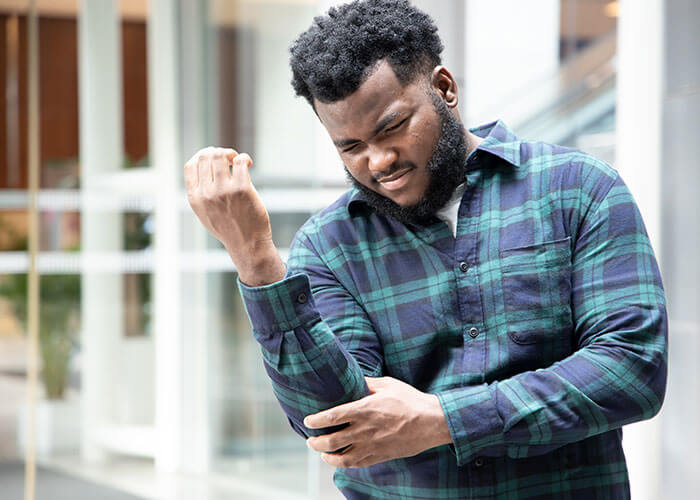
FAQ
Does golfer’s elbow heal on its own?
Golfer’s elbow can heal on its own with adequate rest and care. You should provide rest your forearm flexor muscle and minimise activities that overload them. One way of doing this is wearing a wrist splint. The healing time usually takes anywhere between 6 weeks to 6 months, although it can take more than that depending upon the severity of the injury in the first place
What happens if I don’t treat golfer’s elbow?
If you don’t treat golfer’s elbow, it may form scar tissue and cause permanent degeneration or tears in the affected muscle tendon. This then become a chronic issue with associated pain. You will experience chronic elbow pain with other symptoms like reduced gripping and range of motion. This, in turn, affects your daily activities. Hence early treatment is important.
How long does it take to heal golfer’s elbow?
Typically, it takes 3 to 6 months to heal an injury from golfer’s elbow. It can also take more time for some people, depending upon their age and other health factors. However, if you don’t see any improvement with physical therapy, PRP or Prolotherapy treatment for Golfers elbow is a good treatment option.
Can a Osteopath treat golfer’s elbow?
Osteopaths can treat golfer’s elbow. Osteopathic is an ideal natural treatment for golfer’s elbow without any side effects. A Osteopath will often start by examining the alignment of your elbow and wrist. A plan will then be formulated with specific treatment therapy or soft tissue work to treat your golfer’s elbow symptoms.
How do I know if it’s a golfer’s elbow?
If you have golfer’s elbow, you start feeling pain, weakness, tenderness or stiffness on the inside of the elbow and down the arm, affecting your daily activities like lifting or gripping objects. This often made worse by bending the wrist.
